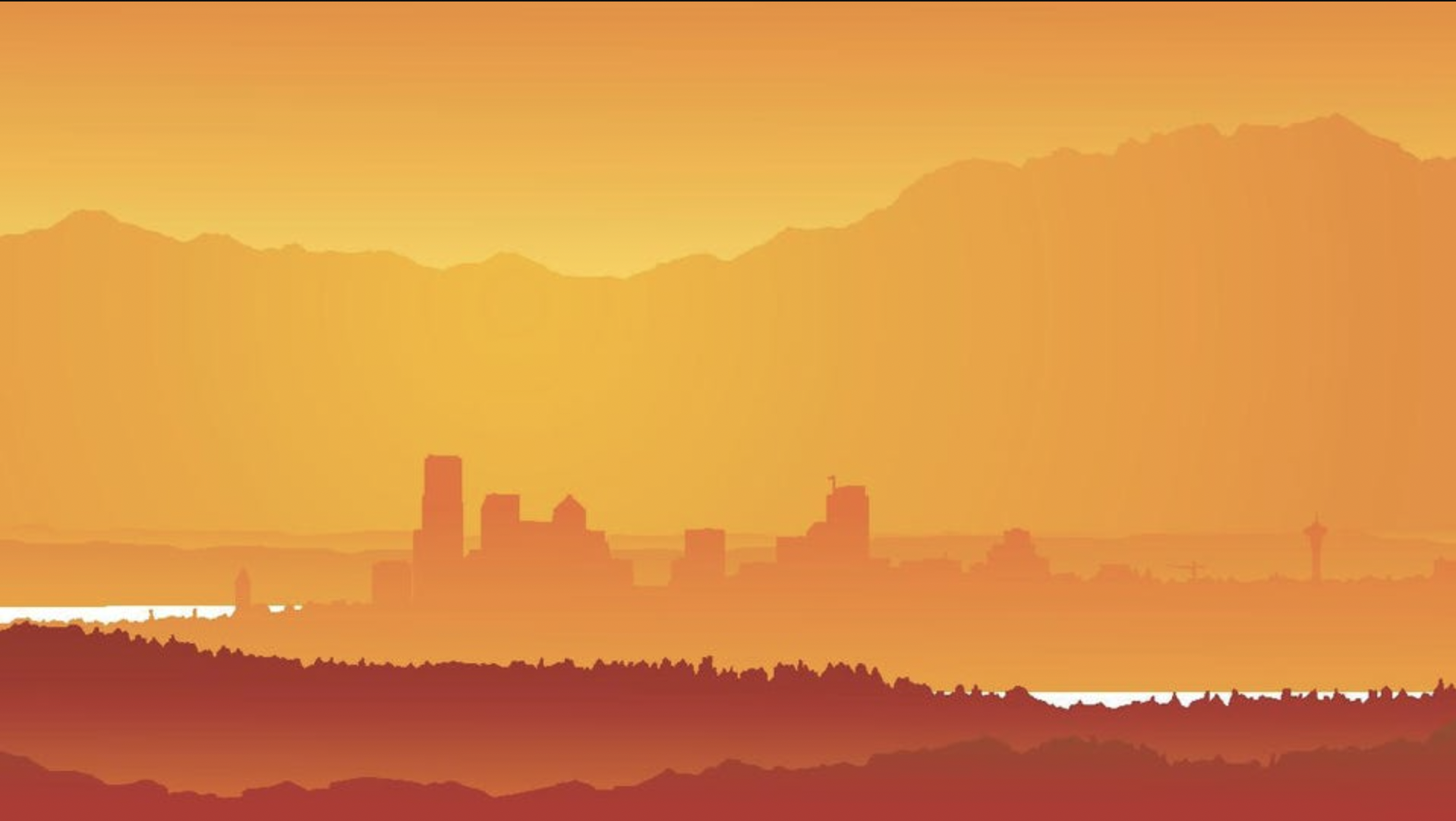We all know the last week of June was the hottest on record across many parts of Puget Sound. In the aftermath of this intense and deadly heat, we learned that some areas of King County can be up to 23 degrees hotter than other areas on hot days Areas with hotter temperatures in cities are called urban heat islands, and these areas typically have less tree canopy and more asphalt or other impervious surfaces that contribute to overall hotter temperatures.
In 2020, scientists teamed up with local residents to collect temperature and humidity data from around King County on one of the hottest days of the summer in order to map heat islands across the county. The study, funded by King County and the City of Seattle, enabled 17 volunteer community scientists to drive 15 routes around the county, taking constant temperature and humidity readings. The maximum temperature the team found that day was 98.8° with a 23.4° difference between the highest and lowest temperatures in the county.
Their results are captured in an interactive map that helps residents explore how neighborhood temperatures compare across King County. The map confirms that hotter areas across King County are primarily located in communities of color and areas where there are fewer trees and more low-income and elderly people. Already, the Trees for Seattle program has responded by partnering with local organizations to enable Duwamish Valley residents (one of the city’s heat islands) to receive up to four free trees for their homes.
As we have already experienced this summer, the impacts of climate change suggest that Seattle will continue to face hotter temperatures and drier conditions. Data on local urban heat islands helps paint a clear and compelling picture of where tree canopy is desperately needed to cool and shade areas from the ever-intensifying summer swelter.
See this related story about a new national study that shows how people of color are more exposed to urban heat.
And check out this article from the NY Times illustrating the haves and the have nots in tree canopy cover in Philadelphia.
Grist is launching a new limited-run weekly newsletter called the Burning Issue, which will examine fire suppression practices, the side effects of wildfires, and break down the overall impact of fire season through the summer and fall. Sign up using the link above!
[Photo Credit: Forbes]

Recent Comments